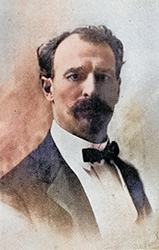Este 11 de noviembre se conmemora el 30 aniversario del fallecimiento del periodista, novelista, ensayista, narrador y poeta cubano Enrique Labrador Ruiz. Nacido en Sagua la Grande, Las Villas el 11 de mayo de 1902, Labrador Ruiz desarrolló un estilo novelístico que bautizó como gaseiforme. En este estilo escribió El laberinto de sí mismo, Cresival (1936) y Anteo (Novela gaseiforme) (1940). Formó parte de la Revista Orígenes junto a otros de los principales escritores cubanos de la época, y por su obra literaria recibió varios galardones importantes, entre ellos el Premio Hernández Catá en 1946 por su obra Conejito Ulán, y el Premio Nacional de Literatura en 1950 por su novela Sangre hambrienta. Continuó cosechando éxitos con El gallo en el espejo (1953) y El pan de los muertos (1958), hasta que partió al exilio en 1976. Tras estadías en España y Venezuela, radicó en Miami, donde continuó escribiendo para revistar literarias y periódicos, como Réplica, El Diario de Caracas y la Revista Linden Lane. Su última obra, Cartas a la carte, fue publicado en el mismo año de su fallecimiento.
Remembering Enrique Labrador Ruiz
This November 11th marks the 30th anniversary of the passing of Cuban journalist, novelist, essayist, narrator, and poet Enrique Labrador Ruiz. Born in Sagua la Grande, Las Villas on May 11, 1902, Labrador Ruiz developed a literary style that he called gaseiforme. In this style, he wrote El laberinto de sí mismo (The Labrynth of Itself), Cresival (1936), and Anteo (Novela gaseiforme) (1940). Along with other distinguished writers of his day, he was a contributor of Orígenes magazine, and for his literary Works he received several important prizes, including the Hernández Catá Prize in 1946 for his work Conejito Ulán (Ulán the Little Rabbit), and the National Prize for Literature in 1950 for his novel Sangre hambrienta (Hungry Blood). He continued reaping success with El gallo en el espejo (The Rooster in the Mirror) (1953) and El pan de los muertos (The Bread of the Dead) (1958), until he went into exile in 1976. After stays in Spain and Venezuela, he settled in Miami, where he continued writing for literary journals and newspapers, including Réplica, El Diario de Caracas and Linden Lane Magazine. His last work, Cartas a la carte (Letters a la Carte), was published in the same year of his passing.













0 comentarios